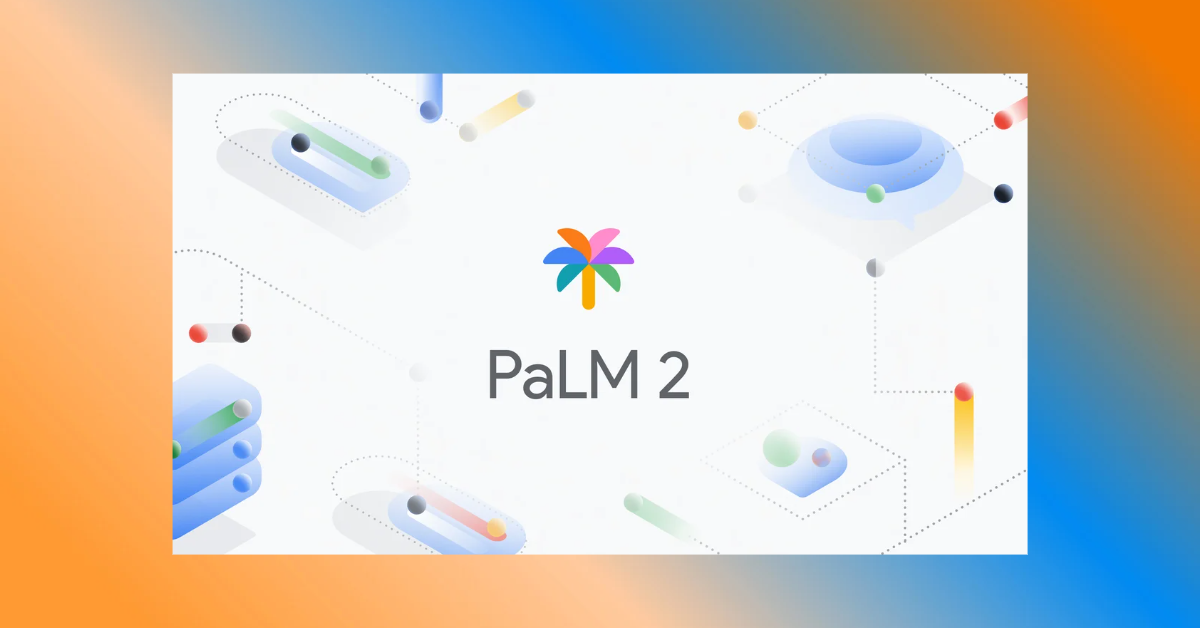Google has announced a number of updates related to PaLM at the Google I/O developers conference this month. Stands for “Permutational Language Model,” PaLM is a large-scale machine learning model developed by Google for natural language processing tasks. It is designed to process and understand text data, and it was built using the search giant’s Transformer architecture and trained on a massive dataset of text from the internet. The latest large language model, PaLM 2, is the next step in Google’s groundbreaking research in machine learning and responsible AI.
PaLM 2 stands out for its advanced reasoning abilities, including code and math processing, classification and question answering, translation and multilingual proficiency, and natural language generation — surpassing the performance of our previous top-of-the-line large language models, including PaLM. This superior performance is achieved by incorporating compute-optimal scaling, an improved dataset mixture, and model architecture enhancements.
Anchored in Google’s commitment to developing and deploying AI responsibly, this latest model underwent rigorous evaluation to ensure it addresses potential biases and harms, as well as its suitability for downstream uses in research and product applications. PaLM 2 is currently used in cutting-edge models like Med-PaLM 2 and Sec-PaLM, and powers generative AI tools and features at Google such as Bard and the PaLM API.
Bard Officially Released
Bard is the company’s collaborative Artificial Intelligence (AI) that is now available in more than 180 countries and territories, to include the Philippines — waitlist removed. The technology giant has made Bard accessible in Japanese and Korean, with plans to support forty (40) languages in the near future. As acknowledged by Google from the outset, while large language models are developing technology with known constraints, the company will maintain its rigorous standards for quality and cultural intricacies as it expands, while also upholding the AI Principles.
Soon, Bard will become more visual both in its responses and prompts with users able to ask things like, “What are some must-see sights in Manila?”. In addition to text, Bard will also be rich in visuals. In order to facilitate unprecedented opportunities for imaginative and creative expression, this AI will now feature visual prompts, in addition to text-based prompts. This feature will be enabled through the integration of Google Lens technology. For instance, if an individual desire to generate a humorous caption for a photo of their dogs, they can upload the image and instruct Bard to “compose a witty caption about these two.” Within seconds, using Google Lens, Bard will analyze the picture, recognize the dog breeds, and generate a selection of clever captions.

The latest updates to Bard includes some nifty tools for developers such as source citations, dark theme, and an “export” button to allow them to run code with its partner Replit (starting with Python). Google is also launching two more Export Actions, making it easy to move Bard’s responses right into Gmail and Docs.
“We want Bard to be a home for your creativity, productivity and curiosity — so we’re working to connect Bard with helpful Google apps and many more partners, including Kayak, OpenTable, ZipRecruiter, Instacart, Wolfram and Khan Academy. There’s a lot ahead for Bard — connecting tools from Google and amazing services across the web, to help you do and create anything you can imagine, through a fluid collaboration with our most capable large language models. When we combine human imagination with Bard’s generative AI capabilities, the possibilities are boundless. We can’t wait to see what you create with it,” according to Sissie Hsiao, Vice President and GM, Assistant and Bard at Google.
Coming Soon: Apps with Bard
Google is set to enhance people’s creativity and curiosity through the integration of their apps and services such as Docs, Drive, Gmail, Maps and more into the Bard experience. Users will have full control over their privacy settings and can decide how they want to use the tools and extensions.
Bard will have the ability to utilize various web services, including those from external partners, to expand its capabilities. In the near future, Google plans to incorporate Adobe Firefly, a range of creative AI models, into Bard. This integration will simplify the process of converting creative concepts into high-quality images, which can be edited or added to designs using Adobe Express.
The possibilities for this integration are vast, including applications in planning children’s birthday parties. With Bard, planners can request an image of a unicorn and cake at a kids’ party, and within seconds, a high-quality image will be generated in accordance with Adobe’s ethical standards and quality guidelines.


